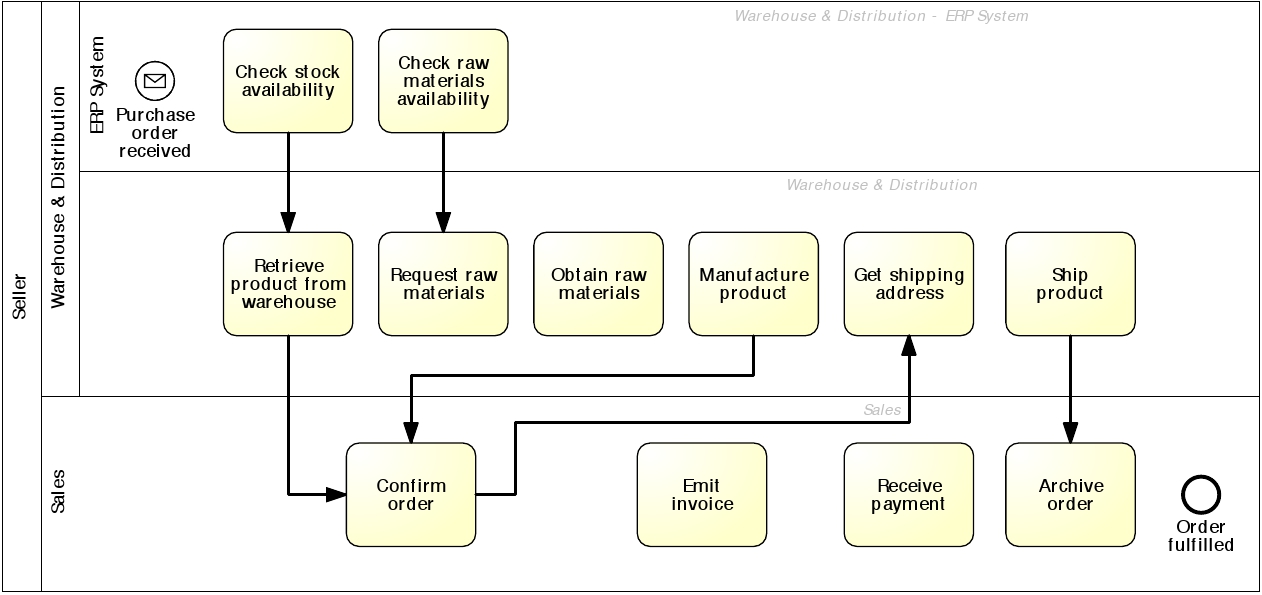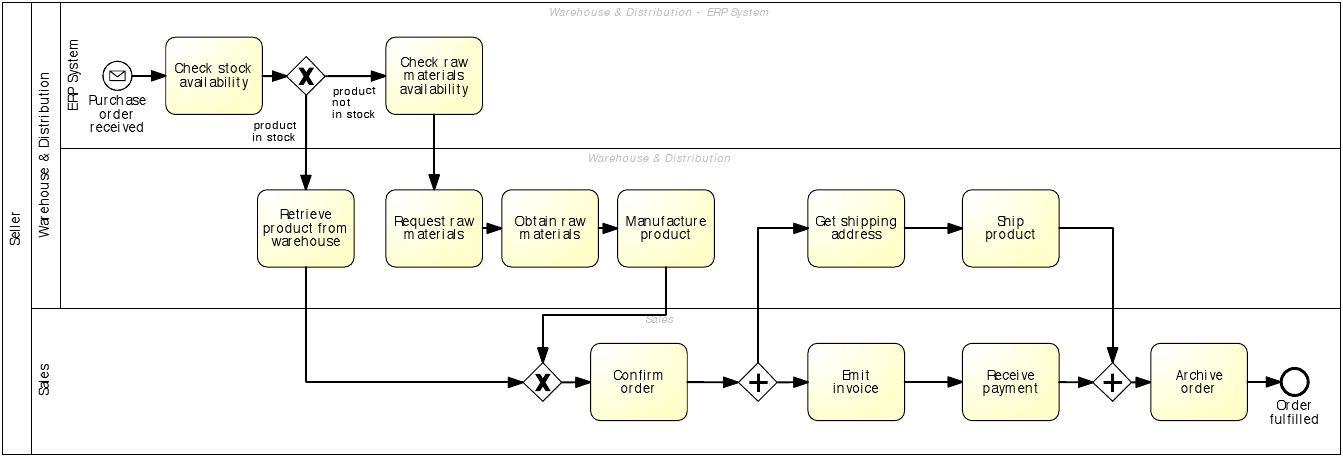5.3 Process Modeling Method
- Modeling a process in the discovery phase via an predefined procedure.
STEP 1: Identify the process boundaries
GOAL: Essential for understanding the scope.
- Has been partially done with the definition of a process architecture.
TODO: Identify events that trigger the processes.
- TODO: Identify events that identify possible process outcomes.
STEP 2: Identify activities and events

GOAL: Identify the main activities of the process.
- Advantage: Domain experts will be able to state what they are doing, even if they do not "know" they are part of a bigger process.
- Documents might explicitly mention activities (ex. A set of work instructions).
- When the model is getting too complex, focus only on the main activities and events.
TODO: Identify activities that take place within the process.
- TODO: Identify intermediate events that take place within the process.
STEP 3: Identify resources and their handovers

GOAL: Identify resources and their handovers.
- Who handles the activities and events.
- Definition of pools and lanes.
- Assignment of activities and events to a pool or lane.
- Handover points are important so that the next worker knows what has been done.
- Make assumptions explicit.
- Identify parts of the process which can be studied in isolation from the rest.
- Who handles the activities and events.
TODO: Create pools and lanes.
- TODO: Place events and activities in the correct pool/lane.
- TODO: Define handover points (where is the work handed over to another resource).
STEP 4: Identify the control flow

GOAL: Create the control flow using gateways.
TODO: Create decision points ((X)OR-splits/joins) with their relevant conditions, where possible.
- TODO: Create AND gateways where possible.
- TODO: Create rework and repetitions using loop structures where possible.
- TODO: Create message flows where information is exchanged between multiple pools/businesses.
STEP 5: Identify additional elements
GOAL: Capture the involved artifacts and exception handlers.
- Additions of data elements and exceptions depends on the modeling purpose.
TODO: Add data objects, data stores and their relations to activities and events via data associations.